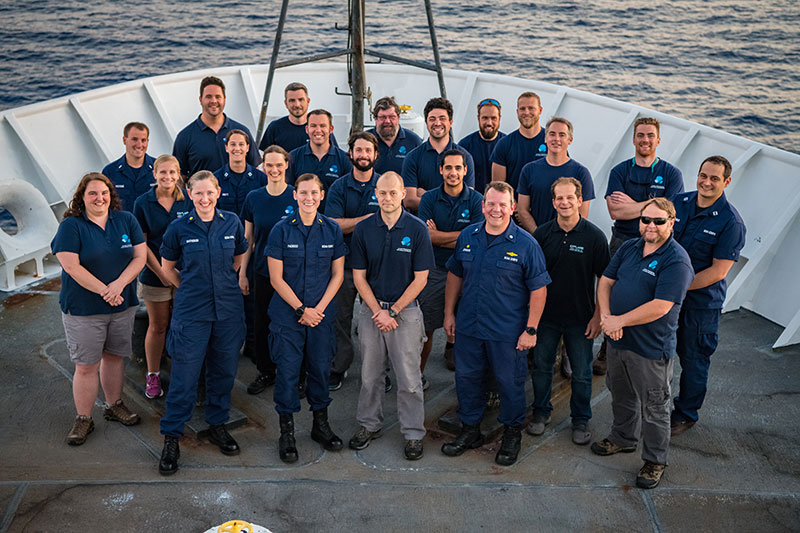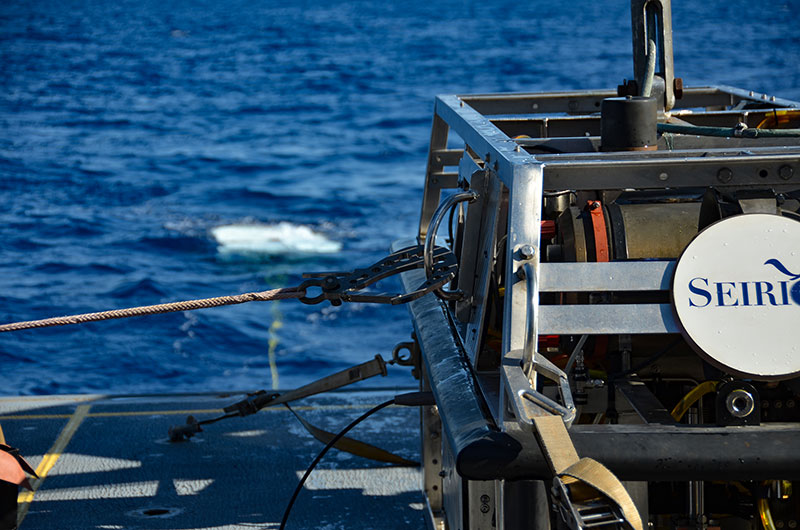This morning, NOAA Ship Okeanos Explorer pulled into port in Key West, Florida. After 23 days at sea, we are sad to leave the amazing and successful Gulf of Mexico 2018 expedition. We conducted 15 remotely operated vehicle (ROV) dives to depths of 305 to 3,010 meters (~820 to ~9,875 feet). Mapping operations were conducted anytime the ROV was not in the water, mapping a total area of approximately 21,100 square kilometers, almost the size of New Jersey. Major achievements included the first-ever scientific surveys in many remote areas of the Gulf of Mexico, including Perdido Canyon, the Southern West Florida Escarpment, and two cultural heritage sites, the latter of which resulted in 3D photogrammetry of both sites. Additionally, ROV surveys resulted in many new observations, including potential new species, range expansion, and new behaviors. Furthermore, we collected 79 samples during ROV dives, and future studies of these will provide important insights into the biology and geology of the deep waters of the Gulf of Mexico.
Once the ship’s gangway was secured, the team worked to wrap up expedition projects, offloaded supplies and samples, and started preparation for the next expedition. NOAA Ship Okeanos Explorer will have six days to get ready for the VIIRS sensor validation, mapping, and CTD rosette casts expedition, which starts in Key West, Florida, on May 9 and ends in Mayport, Florida, on May 18. Over the coming months, the expedition team will continue processing, analyzing, and summarizing the data collected from the Gulf. Once completed, the data from this expedition will be publicly available on our website. In June, we'll be back with live dives during our ROV and mapping expedition that starts in Charleston, South Carolina, on June 11 and ends in Norfolk, Virginia, on July 2. Thanks for following along!

